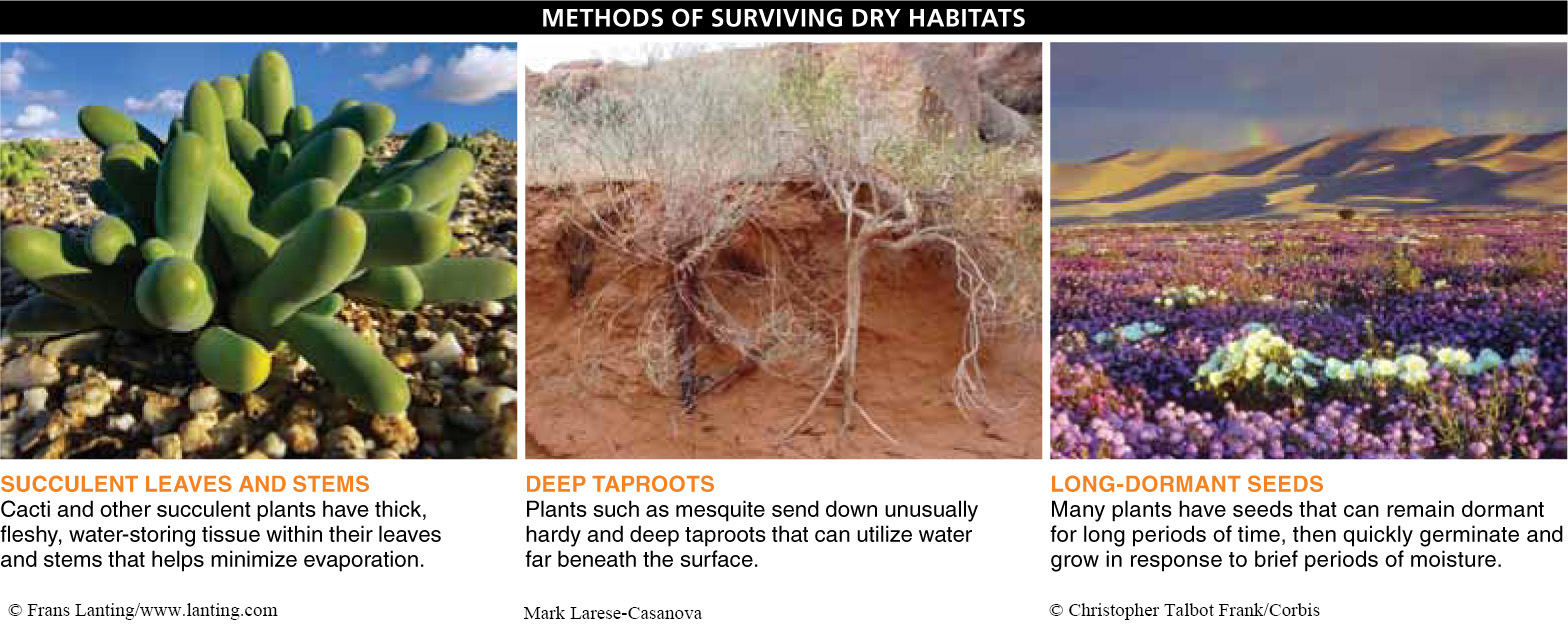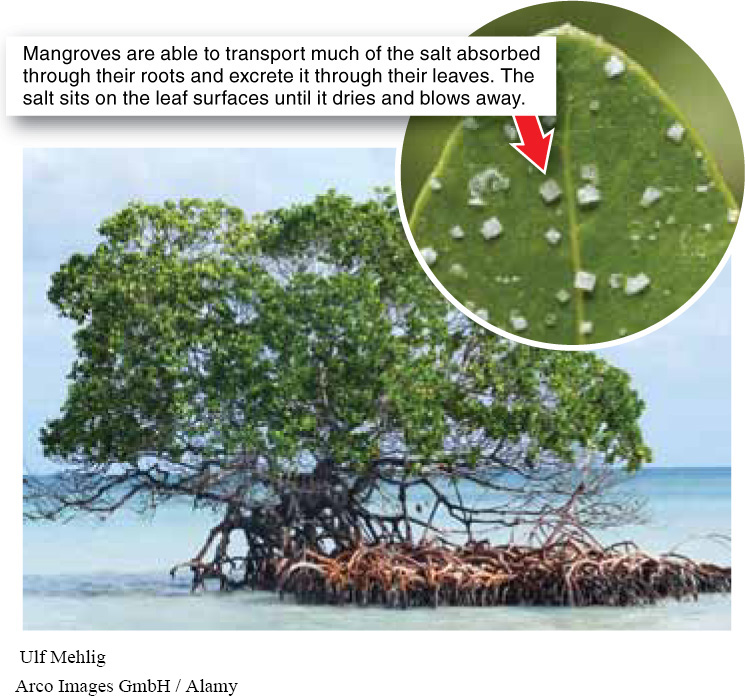19.3: Special adaptations help some plants thrive in extreme habitats.
Just as evolution has produced plant adaptations to deter herbivory, so, too, have a variety of plant adaptations evolved as responses to the non-living components of the environment. We see particularly dramatic adaptations in plants that manage to thrive in some of the world’s most extreme habitats.
Super-dry Habitats In deserts, groundwater is scarce, and moisture loss due to evaporation in the hot temperatures can further constrain a plant’s ability to retain water. Plants have responded to these difficult conditions with several different types of adaptations (FIGURE 19-5).

Figure 19.5: Survival strategies for dry climates.
Succulent leaves and stems. The evolution of thick, fleshy, water-storing tissue in the leaves and stems of cacti and other succulents reduces the surface-area-to-volume ratio of their photosynthetic parts, which helps minimize water loss due to evaporation. Although this adaptation reduces plants’ capacity for gas exchange and thus their overall rate of sugar production relative to plants with thinner leaves, it enables them to survive in the hot, dry desert habitats where thin-leaved plants are likely to dry out and die.
Deep taproots. If water conservation is one strategy of dry-habitat plants, “water mining” is the flip side. Plants such as mesquite establish strong and deep taproots, often boring into the soil a dozen meters or more to find sources of water far beneath the surface.
Long-dormant seeds. Because rain is highly unpredictable and rare in super-dry habitats—several years may pass between rains in the deserts of Chile, for example—many dry-adapted plants have seeds that can remain dormant for long periods of time. The seeds wait out the dry times, then quickly germinate and grow in response to brief periods of moisture.
Salty Environments Marshes and intertidal zones may have pleasant temperatures and plenty of moisture, but extreme levels of salt from the ocean and large fluctuations in salt concentrations can make it difficult for cells to maintain the appropriate salt concentration in the cytoplasm for optimal metabolic functioning (FIGURE 19-6). Plants adapted to saltwater environments are generally unable to reduce the large amounts of salt they absorb with water through their roots. So how do they survive? They transport much of the absorbed salt to vacuoles within their cells, thus isolating and containing it where it has little impact on cellular metabolism. Some plants—such as mangroves—are also able to move much of the salt to the leaves for excretion. The salt dries out on the leaf surfaces and blows away.
Cold and Windy Habitats At both extreme latitudes and extreme elevations, life can be hard: the air is cold, sunlight is limited, the growing season is short, and the winds can be brutal and relentless. As a consequence, plants living in these habitats tend to grow close to the ground and have smaller-than-average leaves (to limit evaporation of water). Grasses, in particular, do well under such conditions (FIGURE 19-7).
Arctic habitats present an additional challenge. Because the first few meters of soil below the ground surface stay perpetually frozen (called permafrost if it remains below freezing for two or more years), root growth is limited, and any water that is present from precipitation or melting cannot drain well. In high-altitude habitats, drainage is good, but the soil is still thin and poor in nutrients. In each case, plant life is usually limited to smaller plants with diffuse, shallow root systems.

Figure 19.6: Survival in salt water.

Figure 19.7: Survival in cold, windy habitats.
TAKE-HOME MESSAGE 19.3
In the course of evolution, plants have become adapted to some of the most extreme of the world’s habitats, including super-dry regions, salty environments, and cold, windy habitats.
What are two adaptations that plants have evolved to survive cold, windy habitats?


